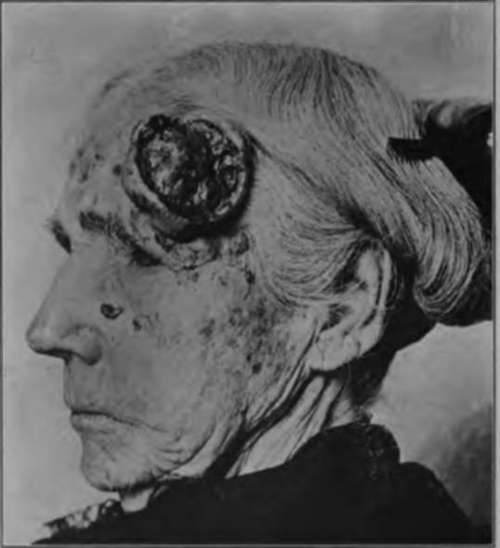III. Rolled-Edge Rodent Ulcers
Description
This section is from the book "Skin Cancer", by Henry H. Hazen, A.B., M.D.. Also available from Amazon: Skin Cancer.
III. Rolled-Edge Rodent Ulcers
Clinical Course
The rolled-edge rodent ulcer is very closely related to the two varieties just described, but more closely to the second type. It begins in the identical way that they do, but is fairly common upon the back and shoulders as well as upon the face. The tendency is for these tumors to grow much more rapidly than the flat type, despite the fact that in many instances there is no surface ulceration for several years (Fig. 28). By the end of a year these tumors usually have a diameter of several centimeters. These growths have a distinctly semiglobular edge and a corresponding depression in the center, so that they resemble the crater of an extinct volcano. The edge is extremely hard, and the skin over it is tense, thin, and shiny, and there are numerous dilated blood vessels tending out into the normal skin. The skin of the central portion may or may not show signs of ulceration. If ulcerated, there in umially but a slight crust. The surface of the exposed or caneer-oim tissue resembles granulation tissue, and is anemic and friable. The late courne of these neoplasms is the same as that of the two preceding type*, and the pathology is identical with that of the nodular lemon*.

Fig. 27.-This large basal-celled cancer, with a markedly elevated edge, arose from a seborrheic keratosis, numbers of which can be seen upon the face. (Held-lngsfeld's collection).
Continue to:
Tags
bookdome.com, books, online, free, old, antique, new, read, browse, download
